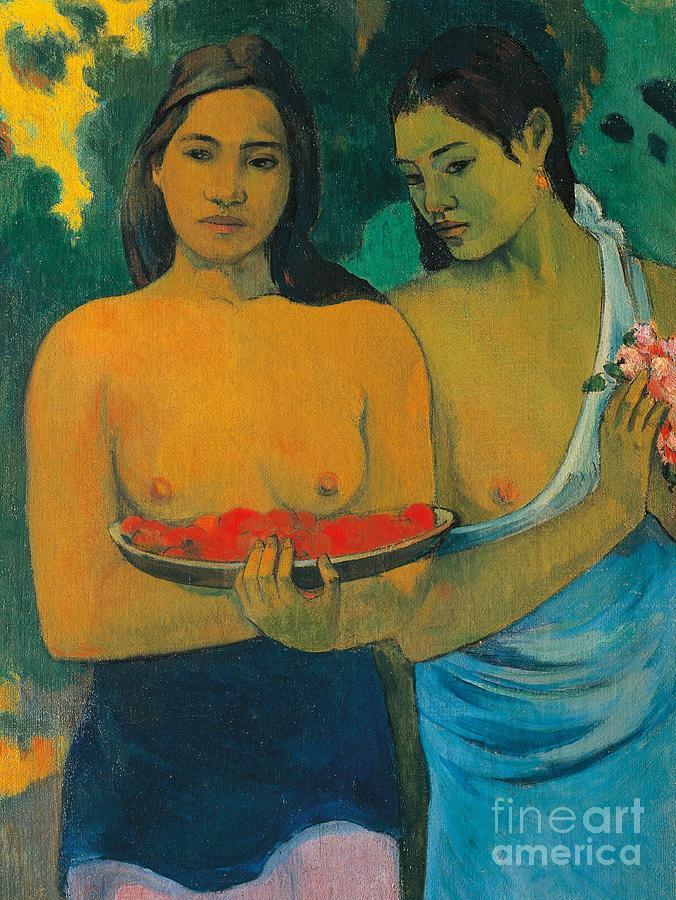Gauguin’s Tahiti
I get another
form rejection from
the same American
magazine
and the neighbour
is feeding the
magpies again
there is bird shit
all over the
fence
it is 7am
-2
thinking of warmer
climates
better people
days worth being
part of
I slam the
back door
and sit in the
lounge room looking
at a Gauguin
print
from his time
in Tahiti
with its pure
bright paints
and peaceful unaffected
faces
that didn’t survive
the progress of
the years
but occasionally surface
now
in the form
of a
smile
and
reminder
that beauty
can
exist.
 Tahiti Two Tahitian Women -- Paul Gauguin
Tahiti Two Tahitian Women -- Paul Gauguin
Pōmare V was forced to abdicate as king of Tahiti in 1880 when his realm was transferred to France. With the aid of English missionaries and traders, his great-grandfather had unified the islands of Tahiti, Moʻorea, Tetiaroa, Mehetia; at its peak the kingdom also included the Tuamotus, Tubuai, Raivavae, and other islands, spread over 3 million sq km of the Pacific ocean. The 2nd king (his grandfather) had converted to Christianity, and the leaders of the society followed suit. Over the decade of the 1880s France annexed other islands in the area, many of which (including Tahiti) had been protectorates for decades. In 1889 the islands were unified as the Établissements de l'Océanie. This coincided with a crisis in the life of French painter Paul Gauguin: his wife had forced him out of their home, and the leading art dealers in Paris were uninterested in his works. He decided to recoup his fortunes by illustrating one of the most popular books of the time, "Le Mariage de Loti" (which Julien Viaud, "Loti," had published as "Rarahu" in 1880, based on the 2 months he had spent in Tahiti in 1872). Though in fact Tahiti was a thoroughly westernized society by then, the book's romantic exoticism made Loti famous (and an 1891 electee to the Académie française) and established the myth of Tahiti as a land where the natives lived only to sing and make love. In Tahiti he established himself in a hut he christened La Maison du Jouir (“The House of Orgasm”), and successively took 3 native brides – aged 13, 14 and 14. In late 1892, however, he was sick with an eye illness, constant diarrhea, and coughing up blood, and he returned to France a year later. Two years later, though, he returned to the south Pacific, where he ws plagued by syphilis and alcoholism. In 1901 he left Tahiti again and settled on Hiva Da, the main island of the Catholic Church-owned Marquises islands. He died there in 1903. Learning of his death, the natives wailed, "Gauguin is dead! There is no paradise!"
ReplyDelete